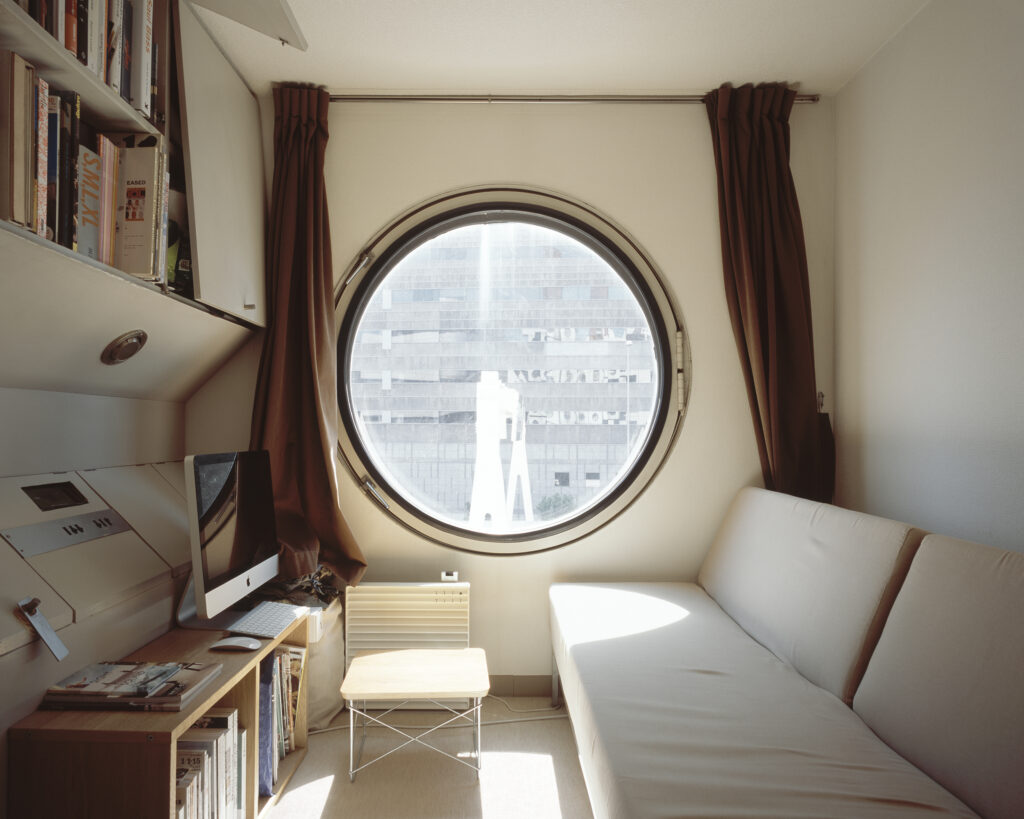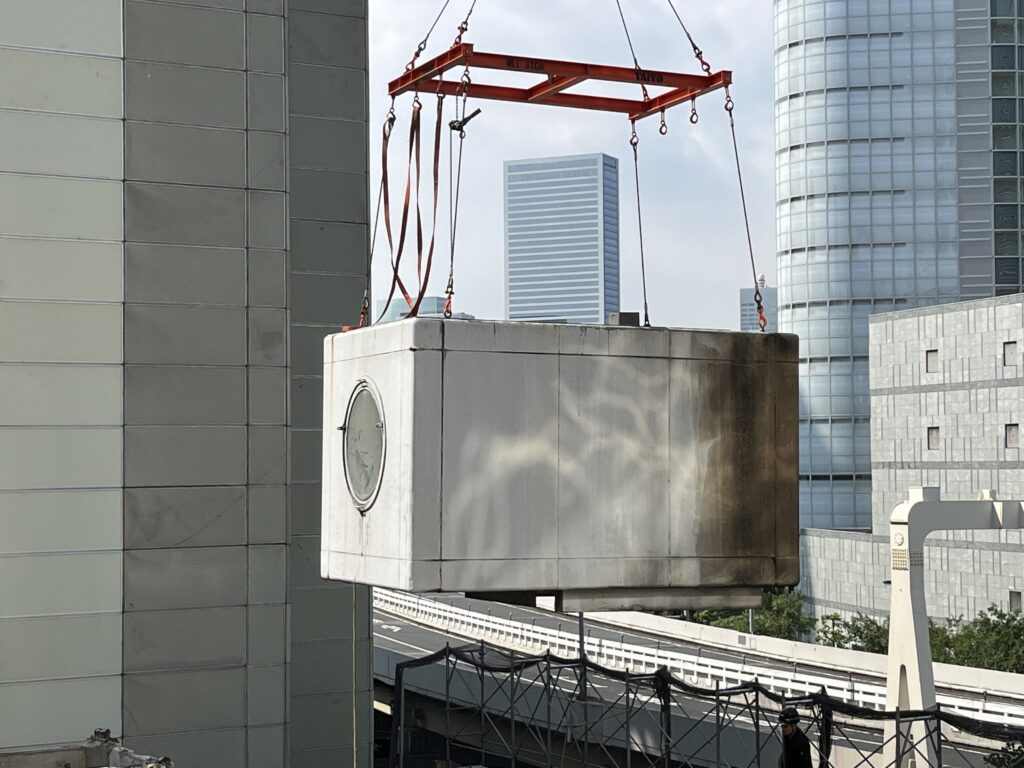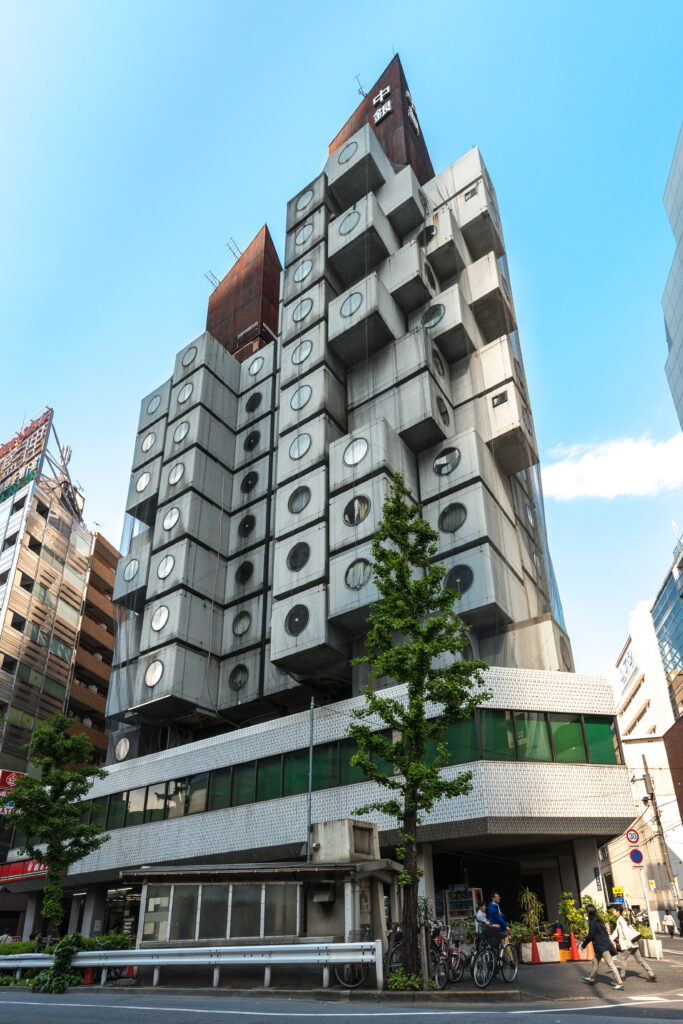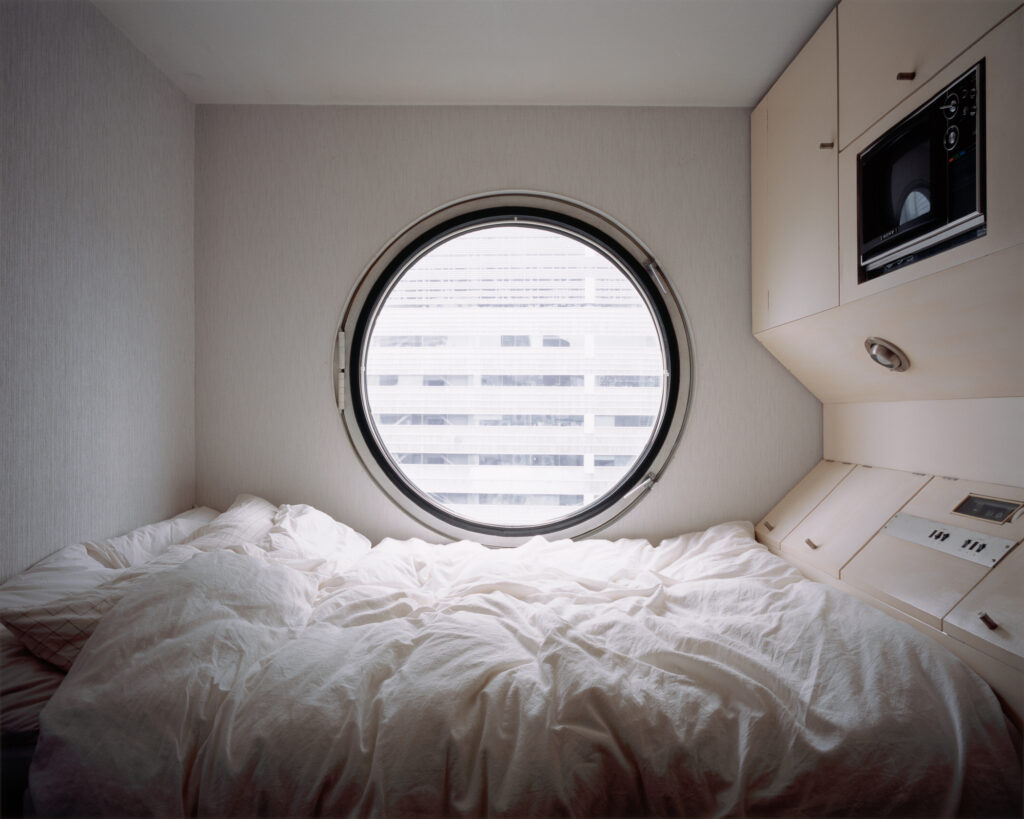
Early one morning in late November 2022, Jennifer Dunlop Fletcher, SFMOMA’s Helen Hilton Raiser Curator and Head of Architecture and Design, visited a high-rise apartment in Tokyo’s Ginza district. Next door, the historic Nakagin Capsule Tower, widely considered one of the world’s most unique buildings, was being demolished. On this day, she joined a small group of the tower’s most ardent residents, a photographer, and the architect’s son, as they silently watched a crane detach the final capsule.
For Dunlop Fletcher, the trip marked a meaningful step in bringing a piece of the Nakagin Capsule Tower into SFMOMA’s collection. “I was really fortunate to be there on the day that the last capsule was removed from the tower,” she says in a recent conversation. Several months later, the museum acquired the structure’s most renowned capsule: architect Kisho Kurokawa’s personal apartment.
Kurokawa designed the tower in the late 1960s, at the height of an architectural movement in Tokyo known as Metabolism. Responding to the devastation of World War II and subsequent reconstruction efforts across Japanese cities, those in the movement envisioned a new urban landscape that was nimble, modular, and able to respond to transformation and recover from catastrophic events with relative ease. Kurokawa “felt that it was important to let the destroyed be, and to create a new Japan,” he wrote in 1977. He and other members of the group used TV to help communicate their visionary ideas. Viewers took note: in the 1960s, the charismatic Kurokawa was the third most popular television personality in Japan.

When the Nakagin Capsule Tower was completed in 1972, it became both a prime example of Metabolism’s core concepts and one of Tokyo’s most talked-about buildings. Kurokawa created an innovative structure where apartments (or capsules, in his terminology) could be “unplugged” from a central core and moved to future cores in other locations, appealing to the next generation’s mobile workforce. The final building comprised two concrete towers connected at the base, each with seventy capsules attached. Nothing like it had ever been seen before.
By today’s standards, the capsules might be considered micro-apartments. Each measured 8.2 by 13.1 feet — nearly narrow enough for an occupant to extend their arms and touch both sides. Kurokawa marketed them as living spaces and private offices for people commuting into Tokyo during the week. “That mixture of living and work spaces coexisting in one building was unique at the time,” states Dunlop Fletcher.
Nakagin Capsule Tower apartments offered a menu of state-of-the-art electronic equipment for office work or home entertainment. “Kurokawa created the Nakagin Capsule Tower according to a traditional Japanese concept of rebuilding the same design with the latest fabrication techniques,” says Dunlop Fletcher. “At the time, the tower was associated with radical post-World War II progress and aligned with the burgeoning dominance of Japanese consumer electronics.”

While the Nakagin Capsule Tower became an icon of future living in 1972, four decades later the land around the tower became so valuable that the Nakagin company wanted to sell it. When the capsule owners protested, the company stopped maintaining the building and it fell into disrepair. In 2021, without upkeep, the tower was practically unlivable, and the land was sold to a real estate group who sealed its fate: demolition. But one determined capsule owner, Tatsuyuki Maeda, made plans to save as many capsules as possible and offer them to museums around the world, preserving the architect’s original concept.
Kisho Kurakawa passed away in 2007. Today, SFMOMA counts the capsule he lived in as part of the museum’s permanent collection. After Maeda and Kisho Kurakowa Architects & Associates carefully restored the capsule as close as possible to its original state, it was loaded on a ship for the transpacific journey to San Francisco.
For Dunlop Fletcher, the Nakagin Tower capsule is an important addition to SFMOMA’s collection for many reasons. “It’s not uncommon to see architectural fragments in museums — for example, we have a set of elevator doors by Louis Sullivan in our collection,” she explains. “But what’s so exciting about this particular capsule is that its journey to SFMOMA realized an aspect of Kurokawa’s vision — the capsule unplugged from the tower and went out into the world, as the architect intended.”

The acquisition aligns with the architecture and design department’s longtime mission to collect work from the Pacific Rim, along with conceptual, visionary architecture. “A museum in Japan owns most of the Metabolists’ works, so there has never been the opportunity to collect from this important period in architecture history,” says Dunlop Fletcher. The capsule became that opportunity: a rare 1:1 scale example of architecture that fits into a museum gallery.
The capsule is in temporary storage as the staff studies how best to care for and install it. When it is presented for public viewing, Dunlop Fletcher anticipates rich discussions about the Nakagin Capsule Tower as a model for more efficient and sustainable living, shared infrastructure, and the ability to move a space with you. “From a contemporary perspective, there is much to learn from this important Metabolist project,” she says. “One that envisioned new, more flexible ways to live in a rapidly changing world.”